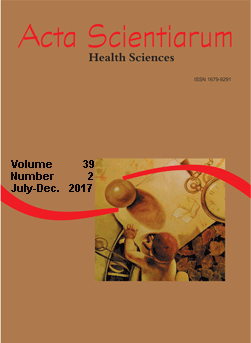<b>Morphometric analysis of three normal facial types in mixed dentition using posteroanterior cephalometric radiographs: preliminary results
Abstract
The aim of the present investigation was to evaluate the craniofacial features of subjects with normal occlusion with different vertical patterns in the mixed dentition using morphometric analysis (Thin-Plate Spline analysis - TPS) applied to posteroanterior (PA) films. The sample comprised 39 individuals (18 females and 21 males), all in mixed dentition, aged from 8.4 to 10 years with satisfactory occlusion and balanced profile and with no history of orthodontic or facial orthopedic treatment. The sample was divided into three groups (mesofacial, brachyfacial and dolichofacial) according to the facial types proposed by Ricketts (1989). The average craniofacial configurations of each study group were obtained by orthogonal superimposition of Procrustes, thereby eliminating size differences and allowing only shape differences between groups to be analyzed by viewing the TPS deformation grid. Significant differences were found among the three facial types but were more remarkable between mesofacials and dolichofacials than between mesofacials and brachyfacials. TPS morphometric analysis proved efficient for accurate visualization of transverse and vertical differences among facial types even before pubertal growth spurt. These differences cannot be easily detected by traditional posteroanterior cephalometry.
Downloads
DECLARATION OF ORIGINALITY AND COPYRIGHTS
I Declare that current article is original and has not been submitted for publication, in part or in whole, to any other national or international journal.
The copyrights belong exclusively to the authors. Published content is licensed under Creative Commons Attribution 4.0 (CC BY 4.0) guidelines, which allows sharing (copy and distribution of the material in any medium or format) and adaptation (remix, transform, and build upon the material) for any purpose, even commercially, under the terms of attribution.
Read this link for further information on how to use CC BY 4.0 properly.























5.png)







